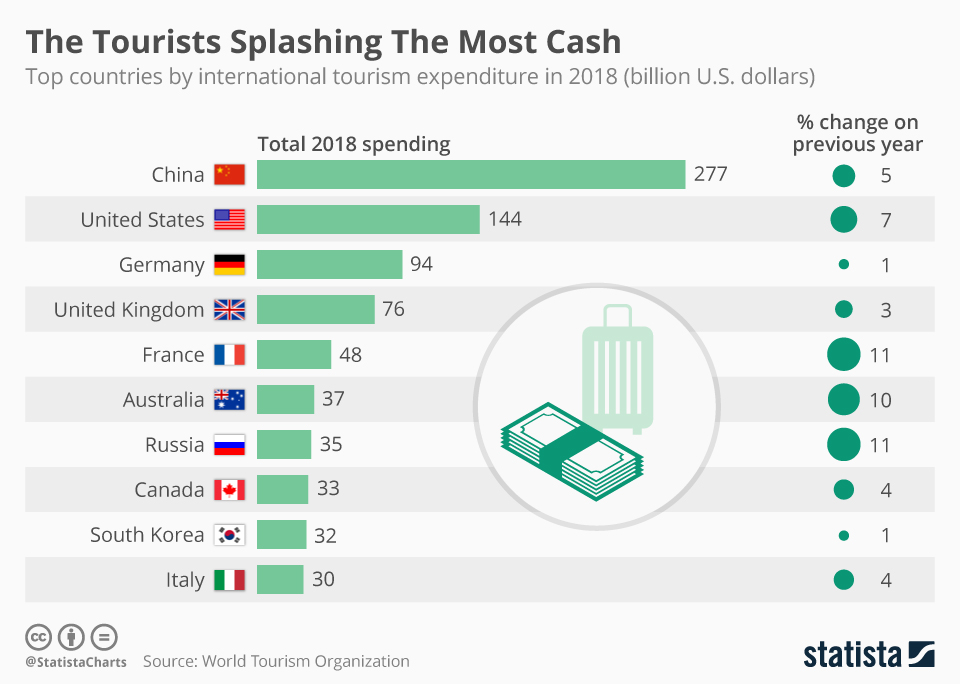China is yet to fully recover from its pandemic-induced travel slump, with projections forecasting outbound tourism to be back on track by the end of 2025. According to the latest available data from the UN World Tourism Organization, the Asian nation lost its position as the world’s leading tourism spender in 2022, after having held the position since 2013.
Although China still saw an increase of some $5 billion in outbound tourism spending between 2021 and 2022, it was not enough to match the surge in spending from the United States in that time period, which more than doubled from $75 billion to $162 billion. This spate of increased travel includes the phenomenon of “revenge tourism”, a term coined on social media following the lifting of Covid restrictions as people started to go on trips that they previously were unable to take.
Even with the growth, however, both China and the United States were still some way off their pre-pandemic figures in 2022. China’s peak had hit $277.3 billion in 2018, while the U.S. reached a height of $184.8 billion in 2019.
As this chart shows, Germany, one of the most populous and richest nations in Europe, continued to rank in the top three big spenders, while the United Kingdom has climbed into fourth position. India, meanwhile, has retained seventh position and also saw a huge increase in tourist spending from $17.8 billion to $31.8 billion. Data for the United Arab Emirates was not published for 2022.
According to the latest update of the UNWTO World Tourism Barometer, international tourism reached 97 percent of pre-pandemic levels in the first quarter of 2024. This was partly thanks to the opening of Asian markets, including visa facilitation, with China having introduced visa-free travel for citizens from France, Germany, Italy, the Netherlands, Spain and Malaysia for a year staring November 2023.
North America saw the strongest performance of the subregions in Q1 of 2024, per the report, with a 23 percent increase of international arrivals in comparison to the same period from before the pandemic, followed by Central America with an increase of 15 percent, the Caribbean and Western Europe, each with 7 percent, respectively.





















